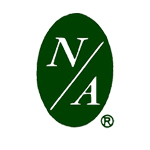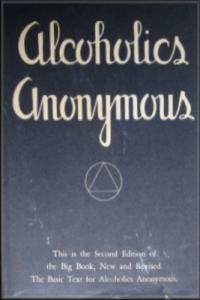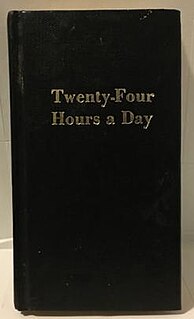Related Research Articles

Alcoholics Anonymous (AA) is an international fellowship of alcoholics dedicated to sobriety and recovery through its spiritually inclined Twelve Steps program. Membership and participation are free, though all expenses of the fellowship are covered by member donations. Structurally guided by its Twelve Traditions, AA is set up as non-professional, non-denominational, as well as self-supporting and apolitical, with an avowed desire to stop drinking being its sole requirement for membership. AA has not endorsed the disease model of alcoholism, to which its program is nonetheless sympathetic, but its wider acceptance is partly due to many members independently promulgating it. As of 2020, having spread to diverse cultures, including geopolitical areas normally resistant to grassroots movements, AA has had an estimated worldwide membership of over two million with 75% of those in the U.S. and Canada. AA results in higher abstinence rates and lower medical costs compared to either no treatment or treatments led by medical professionals.
Twelve-step programs are mutual aid organizations for the purpose of recovery from substance addictions, behavioral addictions and compulsions. Developed in the 1930s, the first twelve-step program, Alcoholics Anonymous (AA), aided its membership to overcome alcoholism. Since that time dozens of other organizations have been derived from AA's approach to address problems as varied as drug addiction, compulsive gambling, sex and overeating. All twelve-step programs utilize a version of AA's suggested twelve steps first published in the 1939 book Alcoholics Anonymous: The Story of How More Than One Hundred Men Have Recovered from Alcoholism.

In sociology, codependency is a concept that attempts to characterize imbalanced relationships where one person enables another person's self-destructive tendencies and/or undermines the other person's relationship. Definitions of codependency vary, but typically include high self-sacrifice, a focus on others' needs, suppression of one's own emotions, and attempts to control or fix other people's problems. People who self-identify as codependents exhibit low self-esteem, but it is unclear whether this is a cause or an effect of characteristics associated with codependency. Codependency is generally defined as a subclinical, situational, and/or episodic behavioral condition similar to that of dependent personality disorder. Codependency is not limited to married, partnered, or romantic relationships as co-workers; friends and family can be codependent.

Narcotics Anonymous (NA), founded in 1953, describes itself as a "nonprofit fellowship or society of men and women for whom drugs had become a major problem." Narcotics Anonymous uses a 12-step model developed for people with varied substance use disorders and is the second-largest 12-step organization.

William Griffith Wilson, also known as Bill Wilson or Bill W., was the co-founder of Alcoholics Anonymous (AA).
The Twelve Traditions of twelve-step programs provide guidelines for relationships between the twelve-step groups, members, other groups, the global fellowship, and society at large. Questions of finance, public relations, donations, and purpose are addressed in the Traditions. They were originally written by Bill Wilson after the founding of the first twelve-step group, Alcoholics Anonymous.
Melody Beattie is an American author of self-help books on codependent relationships.
The Hazelden Foundation is an American non-profit organization based in Center City, Minnesota. Hazelden has alcohol and drug treatment facilities in Minnesota, Oregon, Illinois, Florida, Washington, and New York. It offers assessment and primary residential addiction treatment for adults and youth, including extended care and intermediate care, as well as outpatient treatment, aftercare services and a family program. In February 2014, it merged with the Betty Ford Center to form the Hazelden Betty Ford Foundation headquartered in Minnesota.
Higher Power is a term used in Alcoholics Anonymous (AA) and other twelve-step programs. The same groups use the phrase "a power greater than ourselves" synonymously. The term sometimes refers to a supreme being or deity, or other conceptions of God.
Dan Anderson was an American clinical psychologist and educator. He served as the president and director of the Hazelden Foundation in Center City, Minnesota. He is most associated with the development of the Minnesota Model, the clinical method of addiction treatment, based in part on the twelve-step program of Alcoholics Anonymous.
Clutterers Anonymous (CLA) is a twelve-step program for people who share a common problem with accumulation of clutter. CLA says that it focuses on the underlying issues made manifest by unnecessary physical and emotional clutter, rather than hints, tips and lectures. CLA had active meetings in about 70 cities in 24 states in the US, and several in England, Germany, and Iceland, as of 2011. CLA Tradition 3 states, "The only requirement for CLA membership is a desire to stop cluttering." Clutterers Anonymous replaces "powerless over alcohol" in the First Step of the Twelve Steps originally developed by Alcoholics Anonymous (AA) with "powerless over our clutter." CLA was founded in May 1989 in Simi Valley, California. Some members of CLA describe the inability to let go of objects as a consequence of spiritual emptiness.

James Burwell, known as Jim B. or Jimmy B., was one of the Alcoholics Anonymous (AA) founding members. He was among the first ten members of AA on the East Coast, and was responsible for starting Alcoholics Anonymous in Philadelphia and Baltimore. Later in life, he and Rosa, his wife, moved to San Diego, California and were instrumental in the growth of AA there.
Margaret Marty Mann is considered by some to be the first woman with long term sobriety in Alcoholics Anonymous.

Neurotics Anonymous (N/A), founded in 1964, is a twelve-step program for recovery from mental and emotional illness. To avoid confusion with Narcotics Anonymous (NA), Neurotics Anonymous is abbreviated N/A or NAIL.
William (Bill) G. Borchert (b.?) is an American screenwriter and author who wrote the script for the 1989 film My Name is Bill W., based on the true story of Alcoholics Anonymous founder Bill Wilson.

Alcoholics Anonymous (AA) was founded in 1935 by Bill Wilson and Robert Smith, and has since grown to be worldwide.
Workaholics Anonymous (WA) is a twelve-step program founded circa 1983 for people identifying themselves as "powerless over compulsive work, worry, or activity" including, but not limited to, workaholics–including overworkers and those who suffer from unmanageable procrastination or work aversion. Anybody with a desire to stop working compulsively is welcome at a WA meeting. Unmanageability can include compulsive work in housework, hobbies, fitness, or volunteering as well as in paid work. Anyone with a problematic relationship with work is welcomed. Workaholics Anonymous is considered an effective program for those who need its help.

Twenty-Four Hours A Day, written by Richmond Walker (1892-1965), is a book that offers daily thoughts, meditations and prayers to help recovering alcoholics live a clean and sober life. It is often referred to as "the little black book." The book is not official Alcoholics Anonymous literature.
Father Ralph S. Pfau, also known as Father John Doe was the author of Sobriety Without End, Sobriety and Beyond and the Golden Book series. He is believed to have been the first Roman Catholic priest to enter Alcoholics Anonymous (AA).

Alcoholics Anonymous: The Story of How More Than One Hundred Men Have Recovered from Alcoholism is a 1939 basic text, describing how to recover from alcoholism. Written by William G. "Bill W." Wilson, one of the founders of Alcoholics Anonymous (AA) and many of the first 100 members of the group, the composition process was collaborative, with drafts of the book sent back and forth between Bill W's group in New York and Dr. Bob, the other founder of A.A., in Akron, OH. It is the predecessor of the seminal "twelve-step method" widely used to treat many addictions, from alcoholism, heroin addiction and marijuana addiction to overeating, sex addiction and gambling addiction, with a strong spiritual and social emphasis.
References
- ↑ Palmieri, Tuchy (Carl). "The answer came in 1946 (article)". www.authorsden.com. Archived from the original on 2022-02-03. Retrieved 2022-02-03.
- ↑ C., Glenn (5 December 2008). "The First Edition of the Little Red Book". Hindsfoot Foundation. Archived from the original on 23 February 2020.
- ↑ Pittman, Bill (16 October 1998). The Little Red Book Study Guide. Center City, Minnesota: Hazelden Publishing. ISBN 1568382839.
- ↑ Casey, Karen (2 February 2004). The Little Red Book for Women. Center City, Minnesota: Hazelden Publishing. ISBN 1592850820.
- The First Edition of The Little Red Book Alcoholics Anonymous History at the Hindsfoot Foundation. Retrieved 2012-07-06
- The answer came in 1946 by Tuchy (Carl) Palmieri. AuthorsDen. Retrieved 2012-07-06